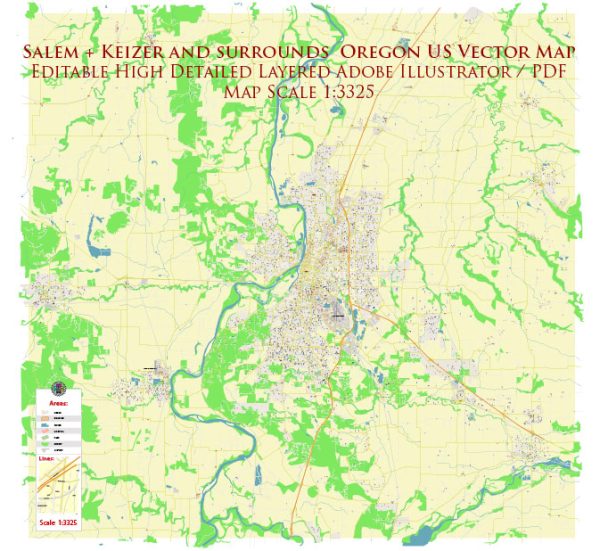Salem-Keizer, located in the Willamette Valley of Oregon, has a rich history of urban development that reflects the broader trends in the state’s history. Here is an overview of the historical urban development in Salem-Keizer:
- Early Settlement and Development (19th Century):
- The area that would become Salem-Keizer was originally inhabited by Native American tribes, including the Kalapuya people.
- In the mid-19th century, European-American settlers arrived in the region, drawn by the fertile soil and the opportunities for agriculture.
- Salem, the capital city of Oregon, was founded in 1842. The city’s early growth was influenced by its status as the seat of government and its location along the Willamette River.
- Economic Drivers:
- Agriculture played a significant role in the early economy, with the Willamette Valley being known for its fertile land. The establishment of farms and orchards contributed to the economic development of the region.
- In the late 19th and early 20th centuries, the timber industry also became a major economic driver in the area.
- Transportation Networks:
- The development of transportation networks played a crucial role in Salem-Keizer’s growth. The arrival of the railroad in the late 19th century facilitated the transportation of goods and people, connecting the area to broader markets.
- Expansion and Consolidation (20th Century):
- The mid-20th century saw significant population growth and urban expansion in Salem-Keizer. The post-World War II era brought about suburbanization and increased car ownership, leading to the development of residential suburbs.
- The city of Keizer, originally a separate community, experienced substantial growth and eventually became integrated into the larger Salem-Keizer metropolitan area.
- Government and Institutions:
- The presence of state government institutions in Salem, including the Oregon State Capitol, has been a consistent factor in the city’s development. Government-related activities have contributed to the stability of the local economy.
- Education and Culture:
- Salem is home to several educational institutions, including Willamette University, which was founded in 1842. These institutions have played a role in shaping the cultural and intellectual landscape of the region.
- Contemporary Development:
- In more recent years, urban development has focused on sustainability and revitalization efforts. The city has invested in infrastructure, parks, and cultural amenities to enhance the quality of life for residents.
- Challenges and Opportunities:
- Like many cities, Salem-Keizer faces challenges such as managing growth, addressing infrastructure needs, and balancing economic development with environmental sustainability. Ongoing community engagement and planning efforts are essential in navigating these issues.
Understanding the history of Salem-Keizer’s urban development provides insights into the economic, social, and cultural forces that have shaped the community over time. It also serves as a foundation for ongoing efforts to plan for the future and ensure the continued well-being of the region.


 Author: Kirill Shrayber, Ph.D.
Author: Kirill Shrayber, Ph.D.